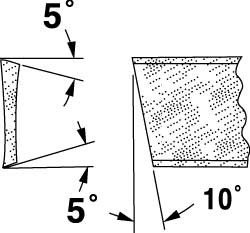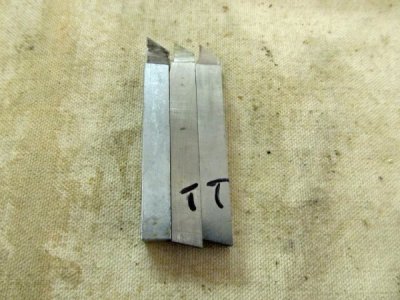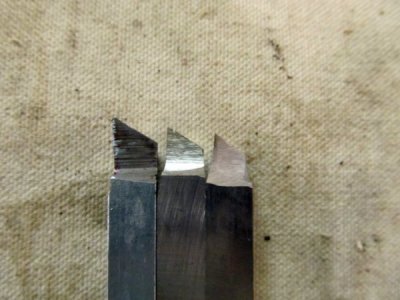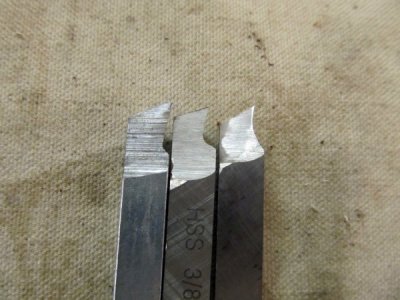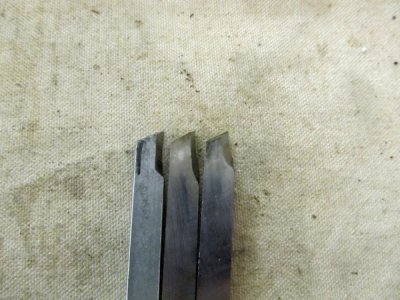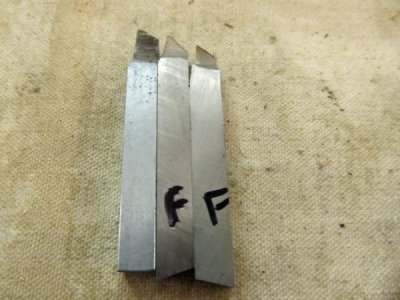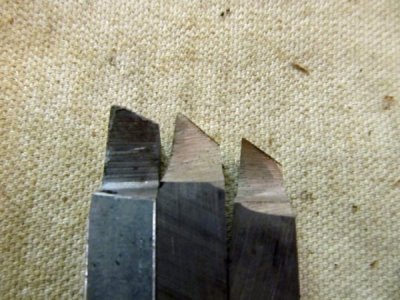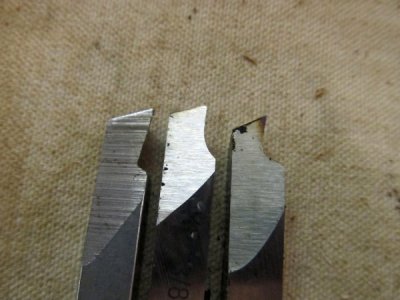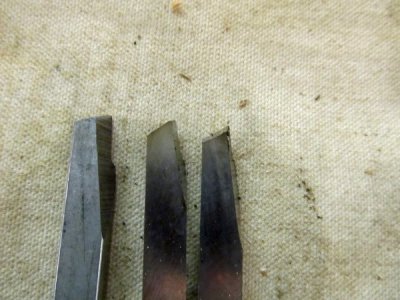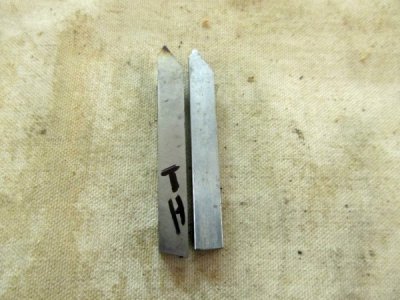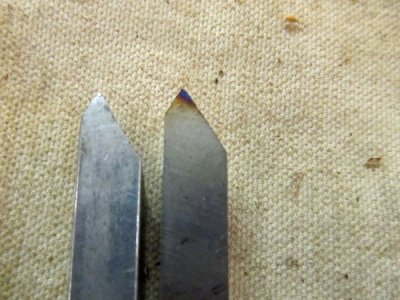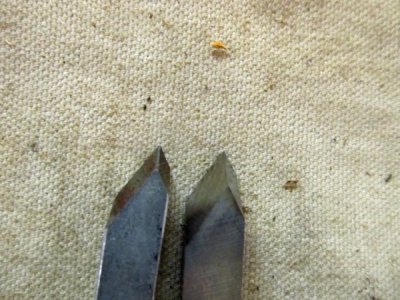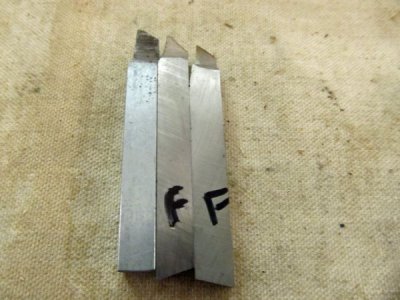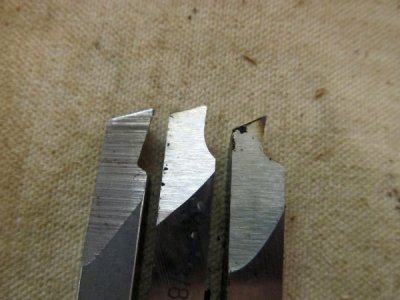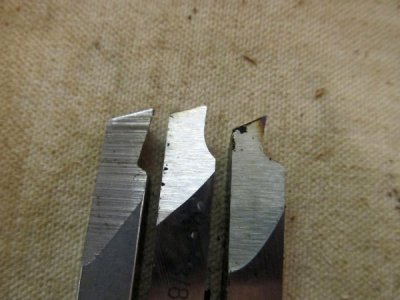Absolutely not dumb; it is, in fact, a valid question. Parting is something we all need to do and it should be a simple, routine job. You turn the part, determine where you want to cut it off and then feed a parting blade into the work to separate it from the stock that is held in the chuck. Sounds simple enough and it really is that simple when everything goes right. The problem is that for many guys, parting is a major PITA because of chatter and that chatter has many potential causes, only one of which is the tool itself. I'm not going to go into setting the lathe up for parting unless there is interest by the guys in this thread.
I will suggest you not attempt to grind a parting tool from scratch. A parting tool must have relief angles in front and on both sides and the side relief angles need to be the same or the tool will steer. It is much easier to just buy a tool and get on with your life. I highly recommend a P-type tool on your small lathe. You can also use carbide tools if you choose but a thin P-type blade will cut with lower cutting forces and is easier to use. P-type blades come in various widths, from 0.04" thick on up to 1/8".

Most of these blades are 1/2" tall. There are T-type blades as well and those are larger.
So, how do you choose one? The larger the work diameter, the larger the blade is supposed to be. This is not a hard and fast rule. For example, a P1-N is typically used for work up to about 3/4" OD. If the work is larger than that then you would step up to P1, which works up to about 1-1/4", and so on. This is when the blade is used with the cutting edge on top. However, if the tool is mounted upside down at the rear of the work then a thin blade can part much larger work pieces. I use a rear mounted parting tool on my Sherline lathe and a P1-N blade only 0.04" thick can part work up to 2" in diameter at very high speeds. So, choosing a blade depends on how you mount it and how large the work is.
If I were you, I would buy a decent P1 blade from AR Warner. There are many cheaper blades but the one from AR Warner is ground well and will last you for many years if you take care of it. I would also look into mounting the tool upside down and run the lathe in reverse to part; this will save you mucho grief. You can either make a tool holder or buy one from Eccentric Engineering:
https://www.eccentricengineering.com.au/index.php?option=com_content&view=article&id=31&Itemid=45. Another option is to make a rear mounted parting tool holder but your cross slide must have threaded holes or T-slots to allow you to mount it; this is the best way I've found to use a parting tool.
Hope this helps.
